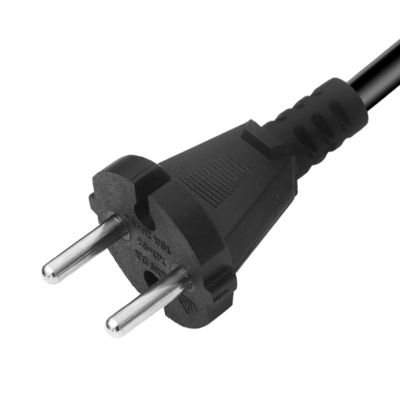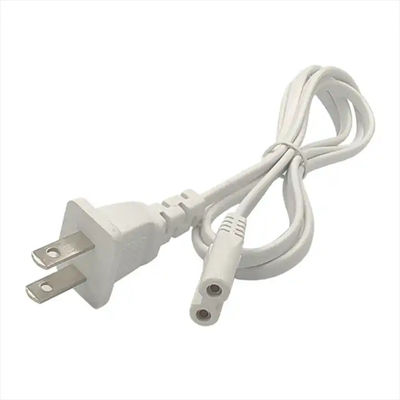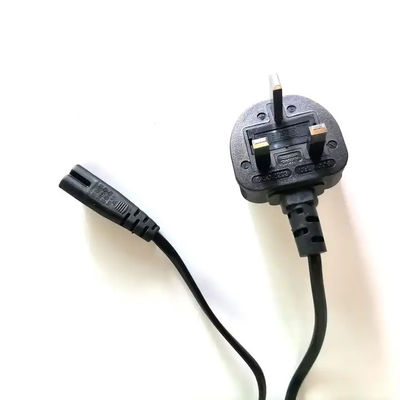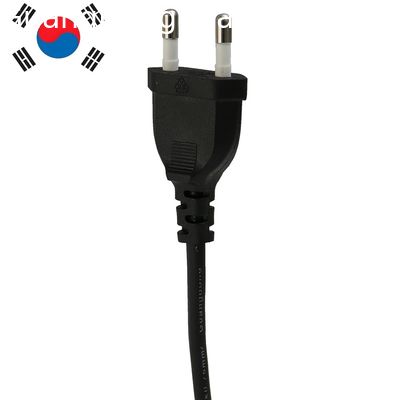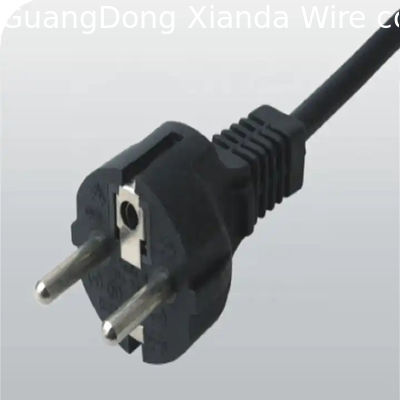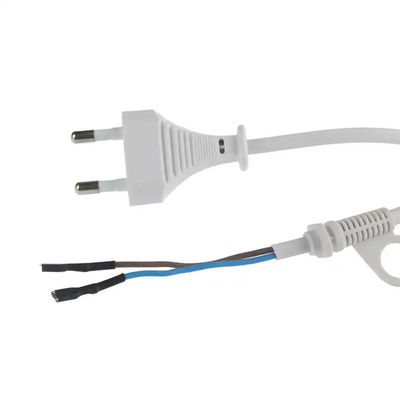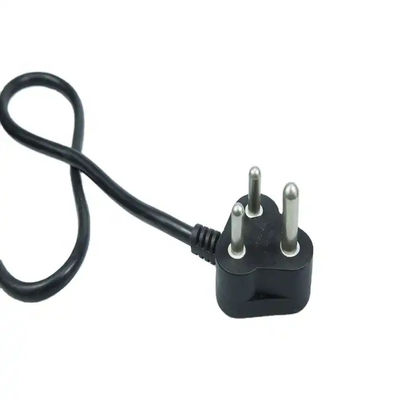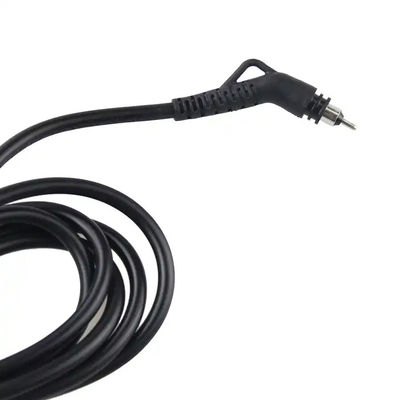The Europlug is a flat, two-pole, round-pin domestic AC power plug, rated for voltages up to 250 V and currents up to 2.5 A.[1] It is a compromise design intended to connect low-power Class II appliances safely to the many different forms of round-pin domestic power socket used across Europe. However, it is not compatible with the rectangular-pin BS 1363 sockets found in Cyprus, Gibraltar, Singapore, Malaysia, United Arab Emirates, Hong Kong, Ireland, Malta and the United Kingdom. Europlugs are non-rewirable and must be supplied attached to a power cord.
History
The Europlug design, intended for use with socket-outlets meeting other standards, appeared first in 1963 as Alternative II of Standard Sheet XVI in the second edition of CEE Publication 7 by the contributing members of Austria, Belgium, Czechoslovakia, Denmark, Federal Republic of Germany, Finland, France, Greece, Hungary, Italy, Netherlands, Norway, Poland, Portugal, Sweden, Switzerland, United Kingdom, and Yugoslavia.[2] The Europlug is therefore sometimes also referred to as the "CEE 7/16 Alternative II plug" or simply as the "CEE 7/16 plug". It was also described in 1975 as plug C5 in IEC Technical Report 83.[citation needed] In 1990 it was defined by Cenelec standard EN 50075[1] which has national equivalents in most European countries, as described in IEC 60083[3] which superseded IEC/TR 83 (and no longer uses the C5 designation).[citation needed]
The Europlug is unusual as the standard specifies only a plug; there is no socket-outlet designed specifically for use with it.

 Your message must be between 20-3,000 characters!
Your message must be between 20-3,000 characters! Please check your E-mail!
Please check your E-mail!  Your message must be between 20-3,000 characters!
Your message must be between 20-3,000 characters! Please check your E-mail!
Please check your E-mail! 
